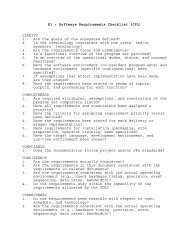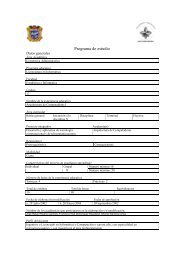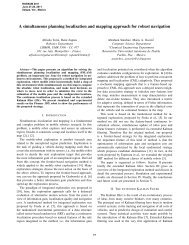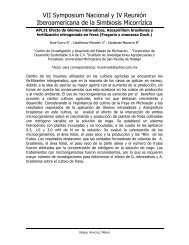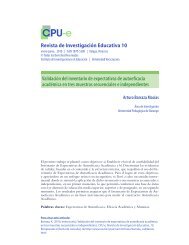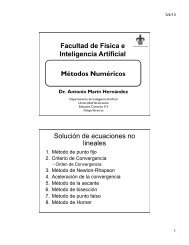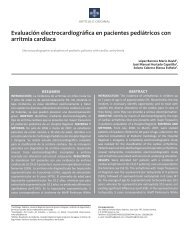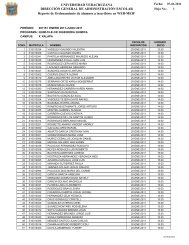Understanding the Software Options
Understanding the Software Options
Understanding the Software Options
You also want an ePaper? Increase the reach of your titles
YUMPU automatically turns print PDFs into web optimized ePapers that Google loves.
Newsfront<br />
Thermo Fisher<br />
Scientific<br />
FIGURE 1. The Prima Pro process mass<br />
spectrometer for online gas analysis was<br />
designed using advanced physical property<br />
modeling software. The analyzer also offers<br />
complete, precise and fast gas composition<br />
analysis, along with lower maintenance than<br />
gas chromatography systems<br />
Keeping an ‘eye’ on every step of <strong>the</strong> chemical<br />
process is possible — and profitable —<br />
thanks to new inline analyzers<br />
The often-uttered phrase, “Keep<br />
your eyes on <strong>the</strong> prize,” couldn’t<br />
be more relevant than it is in<br />
<strong>the</strong> chemical process industries<br />
(CPI) where process optimization via<br />
inline analysis is key to producing<br />
product within specifications (specs),<br />
reducing waste, increasing efficiency<br />
and boosting safety.<br />
“The advantage of inline analysis is<br />
that it provides instant feedback about<br />
what’s going on in your chemical process,”<br />
says David Joseph, senior industry<br />
manager with Emerson Process<br />
Management’s Rosemount Analytical<br />
div. (Solon, Ohio). “Because <strong>the</strong> data is<br />
available in realtime, it provides information<br />
immediately, instead of having<br />
to draw a sample and send it to a laboratory<br />
to have it analyzed, which takes<br />
time. Inline analysis also trends <strong>the</strong><br />
process nicely so you can see if <strong>the</strong>re<br />
are any changes taking place.”<br />
Specifically, <strong>the</strong> ability to provide<br />
data without <strong>the</strong> wait helps chemical<br />
processors in several ways. Obviously<br />
<strong>the</strong> primary benefit is speed of<br />
results. “You’re saving time by getting<br />
data in realtime at <strong>the</strong> process<br />
point,” says Chris Heil, product specialist<br />
with Thermo Fisher Scientific<br />
(Waltham, Mass.). “But <strong>the</strong> real benefits<br />
are had because those immediate<br />
results can be used for feedback<br />
that can help you control, chart and<br />
trend <strong>the</strong> process right now instead<br />
of after <strong>the</strong> fact.<br />
“When you are controlling <strong>the</strong> process<br />
in realtime, you can find a process<br />
upset or out of spec product much,<br />
much faster than when you’re using<br />
laboratory analysis. In <strong>the</strong> chemical,<br />
petrochemical, polymer and food<br />
industries, ten minutes could mean<br />
thousands of gallons of product can<br />
be saved before something goes out of<br />
spec,” he continues. “Point blank: Moving<br />
testing out of <strong>the</strong> laboratory and<br />
onto <strong>the</strong> production floor saves time<br />
and money in reduced waste and increased<br />
yield, higher quality and increased<br />
efficiency.”<br />
Benefits in realtime<br />
The benefits of inline analysis, and<br />
<strong>the</strong> resultant performance optimization,<br />
are especially beneficial in very<br />
dynamic processes, such as in olefins,<br />
Mettler Toldeo AutoChem<br />
ANALYZERS KEEP<br />
WATCH INLINE<br />
FIGURE 2.<br />
The ReactIR 247 is a<br />
new generation of FTIR process<br />
analyzer, equipped with ATR �ber probes,<br />
that can be used to measure material in a solution<br />
as it disappears and crystallizes into a solid<br />
says Peter Traynor, product manager<br />
for process mass spectrometry with<br />
Thermo Fisher Scientific. The front<br />
end of an olefins unit is a series of<br />
cracking furnaces where various hydrocarbon<br />
feeds come in from <strong>the</strong><br />
petroleum refinery and are cracked<br />
with steam to make products such as<br />
ethylene and propylene. The appropriate<br />
target for concentration changes<br />
on a day-by-day basis, depending on<br />
<strong>the</strong> current price for end product or if<br />
<strong>the</strong>re is a downstream demand at ano<strong>the</strong>r<br />
plant. “This means you have to<br />
optimize <strong>the</strong> product slate, which includes<br />
all <strong>the</strong> products you are getting<br />
out of a particular unit from refinery<br />
feedstocks,” notes Traynor. “That product<br />
slate needs to change depending<br />
on prices and demand, as well as <strong>the</strong><br />
current price of energy and steam. So<br />
if you’re analyzing gases inline, you<br />
can see <strong>the</strong> cracking severity via direct<br />
measurement.”<br />
If inline analysis isn’t used, <strong>the</strong>n<br />
models based on temperature and<br />
flow must be employed to make predictions.<br />
However, models are likely to<br />
drift if regular input is not provided<br />
based on inline measurements. “In<br />
this cracking scenario, inline analysis<br />
is crucial because things change<br />
quickly during processing and <strong>the</strong><br />
feedstocks are very valuable.”<br />
Ano<strong>the</strong>r area where optimization is<br />
critical is in catalyst selectivity moni-<br />
CHEMICAL ENGINEERING WWW.CHE.COM AUGUST 2011 17



